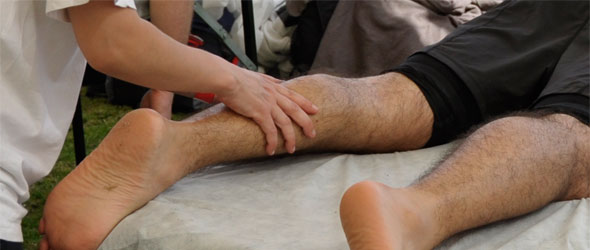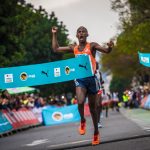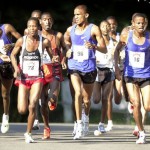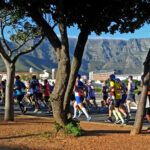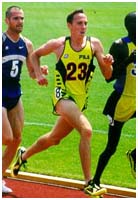 “I recommend massage to athletes of all levels of ability. It will not only improve performance but also will speed up recovery time and reduce the number of muscle injuries. All this will result in making your sport more fun, which is really what it’s all about anyway.” MARY DECKER-SLANEY
“I recommend massage to athletes of all levels of ability. It will not only improve performance but also will speed up recovery time and reduce the number of muscle injuries. All this will result in making your sport more fun, which is really what it’s all about anyway.” MARY DECKER-SLANEY
Fibrosis
Everybody has experienced aching sore legs associated with hard training and/or racing. It is often accompanied with one area that is particularly sensitive, and may also be associated with a palpable lump or ‘knot’. This is fibrosis, an inflammatory response of the muscle tissue. Its cause may be a product of a muscle injury, but the result is always the same – a muscle that is no longer able to function properly. (Each muscle fibre needs to move freely within its sheath for it to function at maximum power and mobility.) The resultant fatigue and pain causes the spasm to spread. This is termed the pain-spasm cycle. Massage, especially deep strokes and cross-fibre strokes ‘spread’ the tissue, smoothing out the knots whilst increasing blood circulation. This is often the only way to break the pain-spasm cycle.
Scar tissue
A perfectly healthy muscle can be stretched beyond its normal range, resulting in a tear. This is a common injury amongst track athletes. Intramuscular scarring forms as a result of a tear, and if untreated, limits broadening of the muscle. In daily living activities this would go unnoticed, but for the athlete this can often be the start point for chronic muscle pain and associated dysfunction. Although rest may alleviate the pain, the scar tissue remains, and the pain recurs when the athlete starts training again. Massage breaks down the adhesions between the scar tissue and adjacent muscles or tendons, and re-aligns the muscle fibres longitudinally.
Chronic recurring muscle tears
This is the third most common running injury. Although the causes are unknown, it is believed to be associated with specific individual biomechanical problems. Since the particular muscle fibres are constantly being traumatised, the resultant scar tissue becomes a major problem for the athlete. The only treatment is a session of deep cross-fibre massage.
Massage however has no effect on:
Improper alignment of the spine, e.g. scoliosis
Muscle imbalance, e.g. incorrect ratio of quadriceps to hamstrings
Bad biomechanics
Improper conditioning
Overtraining
However, the associated pain, fatigue and/or spasm can be relieved by massage, allowing the athlete to maintain his/her training load.
How often?
Ideally the athlete should have a leg massage once a week, and a full body massage once every six weeks. However, finances often prevent this (although some medical aids recognise therapeutic massage) so that a twice-monthly massage is often sufficient to remain injury free.
Conclusion
Massage won’t make an athlete stronger but it will improve the condition of the muscle and enable the muscle to work to its full potential.
Massage won’t eliminate scar tissue but it will re-align the tissue and stop the irritation allowing the athlete to train to his maximum.
Massage won’t eliminate fatigue but it will decrease the chances of succumbing to the overwork syndrome by increasing circulation of lymph and blood. It will also aid relaxation, allowing you to cope with daily stresses and the specific stress of training hard.
View the various articles related to Sports Massage :
- The Sports massage section
- Definition of massage by John Hooper
- Routine injury prevention sports massage
- Sports massage all the responses
- Procedures of Massage
- Effective Massage

















